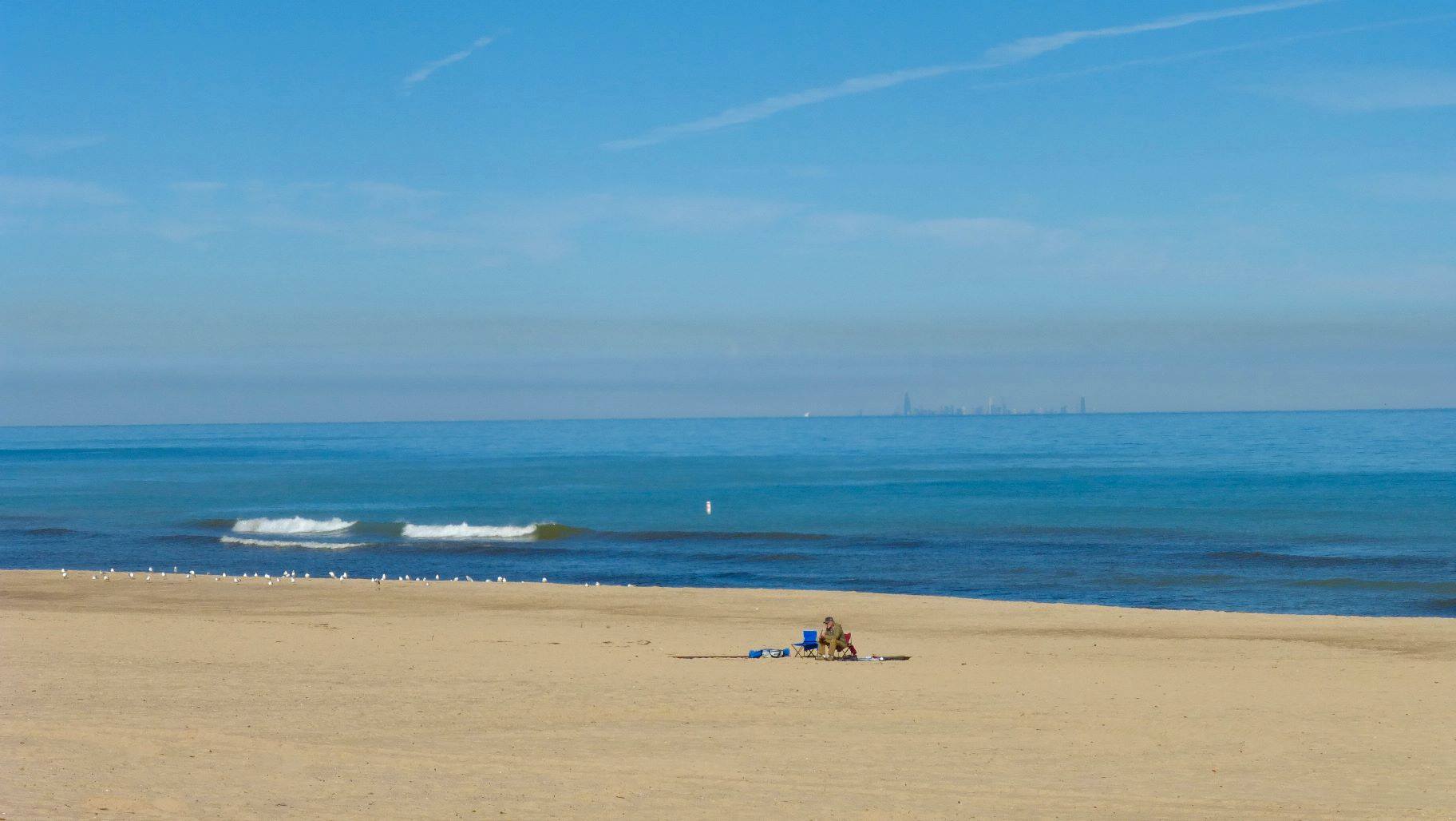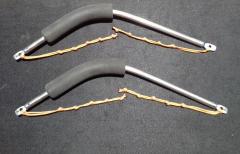-
Posts
3,005 -
Joined
-
Last visited
-
Days Won
60
Content Type
Profiles
Forums
Gallery
Downloads
KL Shop
Blogs
Articles
Everything posted by makatakam
-
.thumb.jpg.53aabc63a639af8d375b2c92cf2e13f8.jpg)
FS: Synergy Zero Wind Great Deca
makatakam replied to Gator1867's topic in Kites for Sale, Swap or Trade
This post should be in the "Kites for sale, swap or trade" thread. Is this Deca in the black white and red, or the black purple and red colors? If it's blk/wht/red I am interested. -
You can't refurbish a broken carbon fiber tube. Once it's broken, it's garbage. So, I just looked at the new diamond rods I bought five months ago and at my older diamonds, and yup, green on the new and none on the old. The new ones are definitely more flexible, which may explain why the sail on my new build doesn't get taut enough and leaves the belly very "floppy". So I will try the older set in my new build tomorrow and see if there is a significant difference.
-
You can move the dihedral fitting up towards the top of the kite about 1/2-inch. If it's glued into position, you'll need to loosen it somehow without breaking it. Move and test fly. When it flies well enough glue it back into position. Also, when you assemble the kite and look at the front, the two spars that go into this fitting should be leaning away from you, not towards you. You can also move the connection point to the top knot. Make sure that both cross spars are the same length and go all the way into the fitting.
-
They are both 3-wrap. That's really all there is to it. Even if there is a difference, it is probably so slight that even JB couldn't feel the difference in performance.
-
-
Sit in the bed of a pickup truck. Have someone drive at the speed of wind you want. Boats and other vehicles work as well. Don't try it with airplanes!
-
On your PC, Microsoft Office Picture Manager, if you have the Office Suite. Simple and fast, save as duplicate, post as photo not as link, delete from PC. Congrats on the twins -- they will be keeping you busy for a while!
-
A 100# line with a 100-lb load is like a knife blade in your hand! Well said -- and even worse if you hands are wet -- ask any fisherman. I have flown in 40+mph winds over grass. Wouldn't even try on the beach, get sandblasted to death.
-
I prefer to use a Hollywood camera crew, shooting at least seven different angles, on-location in the Bahamas and other luxurious destinations, using original music specifically written for each flying session played by the London Philharmonic Orchestra, and incorporating three or four PiP panels in the finished video. That's why there's no video of me flying -- Can't afford it yet!
-
You should not put vents in the center panel. It needs to "belly out" some to create lift. Other than that anything is fair game. There are some made for extremely strong wind where the entire sail is vented. Google "vented rev" and look at the images.
-
Each kite manufactured by any company will have line strength recommendations for flying lines. These already include a "fudge factor", but you can take to 100 pounds over that to feel safe. If you actually do fly in hurricane-force wind you will probably destroy any kite you fly. The seams on the foil will more than likely rip apart. The delta, with only a broken cross brace, will actually incur less damage.
-
You can pretty much do anything you want, as long as you keep the same amount of resistance on both sides of the sail. It doesn't even have to be symmetrical.
-
Hi @Floater, welcome to the forum.
-
Just remember -- a greater sail area without a decrease in the weight to sail area ratio will not fly more easily, only slower.
-
.thumb.jpg.53aabc63a639af8d375b2c92cf2e13f8.jpg)
Judging wind-speed in the window compared to the ground
makatakam replied to Materdaddy's topic in Beginners
Hi, Materdaddy. Welcome to the forum. 50# lines? The Quantum comes from the factory with 150# lines. The Quantum is rated at medium to heavy pull. If you were using 50# lines they would probably have snapped at 6mph. The wind at ground level can be significantly less than it is further up in the window, although ground level is usually below eye level. The lower speed caused by ground turbulence is generally below six feet, and even lower as wind speed increases. Usually, the difference is less than 20%. How much depends on the type of "turf" present, i.e. sand, grass, rocks, etc. Wind is also choppy and gusty on occasion, especially inland, and unpredictable most of the time. For the Quantum, 8-11mph wind should not require moving the bridle adjustment all the way to the high wind tabs, maybe only slightly below center at most. However, I can relate to both lines snapping together. Happened to me while flying a Thunderfoil 2.4 in 25+, gusting to 35. The foil ended up about 70' up in a tree. I did get the kite back using a slingshot to shoot a lead fishing weight with paracord attached to it at it until I could snag it and pull it down. Only one 3" tear. I got lucky, it could have been worse. There is no fast rule regarding line weight/kite/wind speed. It depends on variables that can be changed dramatically by making adjustments to the bridle. A small kite can have twice the pull of a kite twice its size depending on the sail design, and how the wind spills off the sail, the type of fabric used for the sail, ........ after a while you just develop an instinct for what you can get away with in certain conditions. -
The unequal lines throw off all the mental and physical reference points that you form as you learn. Every time something changes your mind and body have to re-adjust. Just makes it a bit more difficult to be consistent in your efforts, but eventually your mind and muscle memory will settle into a groove and it will become instinctive.
-
Congrats, Mike. Enjoy.
-
You should get the top and bottom lines to within 1" of difference in length, eventually. For now, just use the shorter lines on top and monitor the change in length over a dozen or so flying sessions. If they don't stretch any -- and I doubt that they will stretch anywhere near four inches -- you should adjust them to match. Watch the line equalization video by John Barresi. It's a pain in the butt to do, however, you should do it. The other method some pilots use is to tie additional knots in the sleeving that forms the attachment loops at both ends of each line. Each simple overhand knot you tie will decrease the length by about 1/2". If you tie figure-eight knots you lose close to an inch. You can lose even more by tying a surgeon's loop, but the knot will be quite bulky. Tie the knot where it won't make the end loop too small to work with easily. Tying knots is a quick and easy cheat in the field, but is not as effective as true equalization, and any knot you tie (intentionally or not) anywhere in the lines will decrease their strength. In kite flying, just a little bit of logic goes a long way. Remember, it's kite flying after all, not rocket science. Keep smiling, and don't forget to breathe.
-
Hi @kevmort, and welcome to the forum and to Rev kite flying. Sounds like you're doing well and having some fun also. There are three sizes of the "Rev" design: 1, 1.5, and 2, with the size decreasing as the numbers increase. The "Speed series" is a completely different beast as you will eventually find out. I can't open the photo files you posted (don't know why), but I'm guessing your kite is the 1.5 size. All the 1.5 size frames are interchangeable, and depending on the the type of sail (ultralight, standard, vented) may or may not be advisable, but are definitely do-able. Obviously, the less the frame and sail combo weigh, the lighter the wind you can fly in without having to struggle to keep it in the air. Frames can swapped in each size, but not across sizes. The individual pieces of each weight of frame can also be mixed and matched to create "hybrid" combinations. In general, the bigger size 1 sails are made for lower winds and are slower, graceful, and pull a bit more. The 1.5 size is what most pilots fly most of the time. The 2 size is quite fast (faster than what you want to learn on) and has less pull. Keep asking what you need to know, and we'll fill you in as best we can.
-
Or you could just get fiberglass window screen from your local hardware store.
-
You can Google "Quantum kite owners manual" on-line. Very detailed instructions regarding all aspects of the kite, and a very good general description of dual-line kite features and adjustments.
-
Ideally, all four lines should be of equal length. If not, the two top lines should be of equal length, and the two bottom lines should be of equal length. When the tops stretch and become longer than the bottoms, switch the bottom lines to the top. When they stretch they will equalize with the others.
-
Talk to the local who flies sport kites. Kiters are a friendly bunch, and usually quite eager to help anyone wishing to learn. Plan a field trip to a kite festival near you, or go by yourself, and tell people flying there about what you want to accomplish. You will probably get offers to help you.
-
Lay the open end of the inflatable tail downwind, in other words turn 180 degrees from the direction it landed in. The wind will deflate it for you. Roll it onto heavy cardboard tube or wooden dowel rod about 1-1/2" in diameter.
-
Longer Polyester (stretchy) lines will be easier to learn with than shorter Spectra (zero-stretch) lines. Most beginners have the tendency to over-control with large and sudden control inputs/movements. Stretchy lines will decrease the severity of your control inputs, and longer lines give you more time to react to what the kite does. Long lines=Model T Short lines=Ferrari


